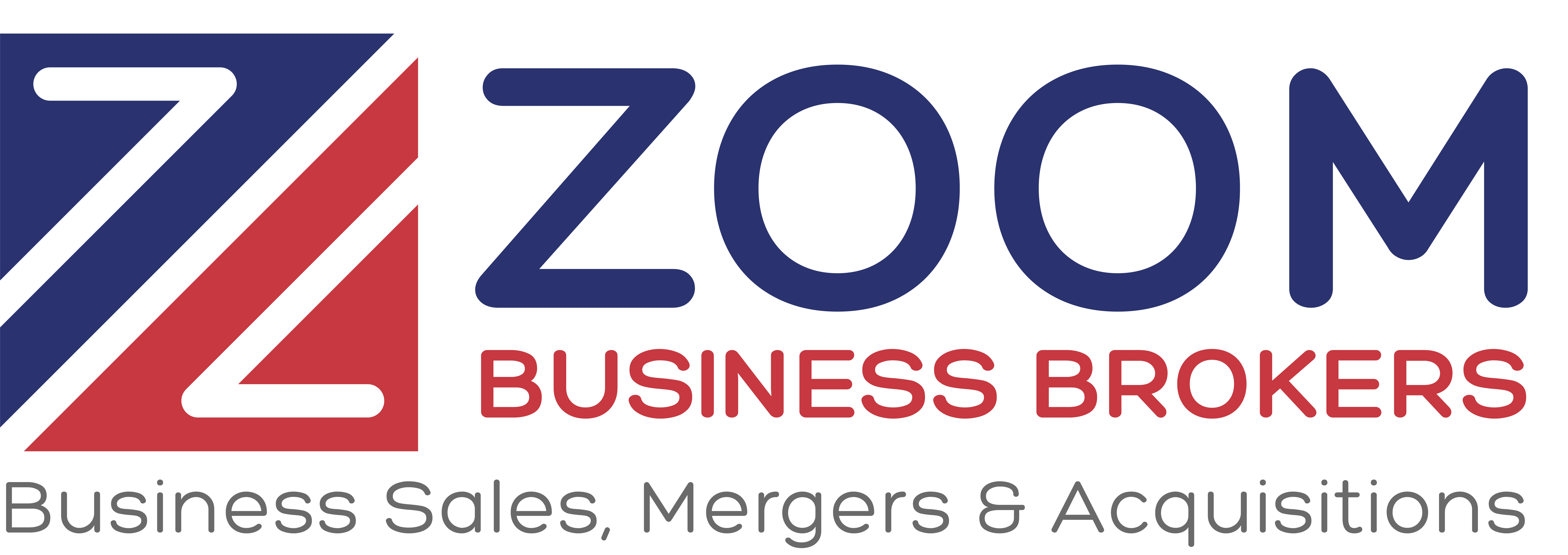
Essential Meeting Tips for Buyers & Sellers

The buyer-seller meeting is quite often a “make or break” meeting. Your business broker or M&A Advisor will do everything possible to ensure that this meeting goes as well as possible.
It is vitally important to realize that rarely is there an offer before buyers and sellers actually meet. The all-important offer usually comes directly after this all-important meeting. As a result, you want to ensure that meetings are as positive and productive as possible.
Buyers need to understand how the process of selling a business works and what is expected of them from the process. Buyers also need to understand that following their broker’s advice will increase the chances of a successful outcome.
Sellers should be ready to be honest and forthcoming during the meeting. They also want to be sure to not say or do anything that could come across as a strong-armed sales tactic.
Asking the Right Questions
If you are a buyer preparing to meet a business owner for the first time, you’ll want to make sure any questions you ask are appropriate and logical. It is important for buyers to place themselves in the shoes of the other party.
Buyers also shouldn’t show up to the buyer-seller meeting without having done their homework. So be sure to do a little planning ahead so that you are ready to go with good questions that show you understand the business.
Building a Positive Relationship
Buyers should, of course, plan to be polite and respectful. They should also be prepared to avoid discussing politics and religion, which often can be flashpoints for confrontation. When sellers don’t like prospective buyers, then the odds are good that they will also not place trust in them.
For most sellers, their business is a legacy. It quite often represents years, or even decades, of hard work. Needless to say, sellers value their businesses. Many will feel as though it reflects them personally, at least in some fashion. Buyers should keep these facts in mind when dealing with sellers. A failure to follow these guidelines could lead to ill will between buyers and sellers and negatively impact the chances of success.
Sellers Should Be Truthful
Sellers also have a significant role in the process. While it is true that sellers are trying to sell their business, they don’t want to come across as a salesperson. Instead, sellers should try to be as real and honest as possible.
Every business has some level of competition. With this in mind, sellers should not pretend that there is zero competition. A savvy buyer will be more than a little skeptical.
The key to a successful outcome is for business brokers and M&A Advisors to work with their buyers and sellers well in advance and make sure that they understand what is expected and how best to approach the buyer-seller meeting. With the right preparation, the odds of success will skyrocket.
Copyright: Business Brokerage Press, Inc.
The post Essential Meeting Tips for Buyers & Sellers appeared first on Deal Studio – Automate, accelerate and elevate your deal making.

The Main Street Lending Program

There is no doubt that the COVID-19 situation seems to change with each and every day. The disruption and chaos that the pandemic has injected into both daily life and business is obvious. Just as it is often difficult to keep track of the ebbs and flows of the pandemic, the same can be stated for keeping up to speed on the government’s response and what options exist to assist companies of all sizes.
In this article, we’ll turn our attention to an overlooked area of the government’s pandemic response and how businesses can use a whole new lending platform to navigate the choppy waters.
As the pandemic continues, you will want to be aware of the main street lending program, which is a whole new lending platform. It was designed for businesses that were financially sound prior to the pandemic. Authorized under the CARE Act, the main street lending program is quite attractive for an array of reasons. Let’s take a closer look at what makes this program almost too good to be true.
This lender delivered program is a commercial loan. Unlike the PPP, there is no forgivable component. However, the main street lending program does have one remarkable feature that will certainly grab the attention of all kinds of businesses. It can be used to refinance existing debt at a rate of around 3%. With that stated, it is also important to note that businesses cannot refinance existing debt with the current lender. Instead, a new lender must be found. Generally, loans are a minimum of a quarter million dollars and have a five-year term. In another piece of good news, there is a two-year payment deferment period.
The main street lending program can be used in a variety of ways. In short, the program is not simply for refinancing existing debt. Additionally, there is no penalty for prepayment. The way the program works is that lenders make the loans and then sell 95% of the loan value to the Fed. This of course means that the lender is only required to retain 5% of the loan on their balance sheet. The end result is that lenders can dramatically expand the amount of loans they can make.
Whether it is the PPP or a program like the main street lending program, there are solid options available to help you. Businesses looking to restructure debt or put an infusion of cash to good use may find that the main street lending program offers a very flexible loan with great interest rates.
Copyright: Business Brokerage Press, Inc.
The post The Main Street Lending Program appeared first on Deal Studio – Automate, accelerate and elevate your deal making.

Why Does Your Business Need Google Reviews?

In today’s business climate, reviews are the differentiator. Years ago, people commonly asked for references when they were vetting a product or service. But these days when people are searching for a local business to work with, they are likely to conduct research on their own and read online reviews.
Google reviews can give businesses a big credibility boost without having to spend a dime. Let’s take a look at some of the key benefits.
Increased Credibility & Trust
According to statistics, approximately 91% of consumers read reviews to determine credibility of a local business. In fact, 84% of consumers say the positive reviews have helped them gain trust. Without the reviews, that level of trust would not have been established.
Needless to say, people trust Google. The fact that these reviews are on a 3rd party website increases transparency. These reviews have much higher value than testimonials posted on the actual business website.
Improved Business Conversions
Once a potential customer gains trust in your company through reading Google reviews, it is more likely the conversation will get converted to an actual business transaction.
Customer Feedback Loop
When your customers write reviews about your business and post them on Google, these reviews often clearly mention details about your product or service. Through this means, future customers become educated. These reviews can also serve as a feedback loop for you if things need improvement.
Increases Online Reputation & Visibility
The power of online marketing methods you might be using to promote your business will be amplified, as users will become more attracted to your business due to 5-star reviews. This factor increases online traffic to your website and an increase in leads and business.
Another fact to be conscious of is that your clients will review your products or services whether you want them to or not. If you fail to set up Google reviews, you’re missing out on the opportunity to gain a level of control and visibility.
How to Set Up Google Reviews
- Create a Google My Business account. – Visit https://business.google.com/ to sign in or create a Google account for a business. Complete the step by step process by filing required information like email, phone number, business details, etc.
- Ask clients to review your services. – Start sharing your Google My Business URL with clients and ask them to post a review about your services. When asking for reviews, you can mention to clients that their review will help everybody else make an informed decision when they are looking for help. It is important to ask about the review within a few days of closing your transaction. If more time goes by, the client may be less motivated to post a review for you.
- Remind clients. – Everybody is busy. Therefore, there is a chance that your client might forget to write a review. In this case, we recommend reminding them to do so. You can also politely inquire if they need any help posting the review that you discussed.
Through the above-mentioned process, you can begin generating reviews for your business. Of course, it goes without saying that you can only guarantee good reviews when you are providing excellent customer service along with a top-notch product or service.
Copyright: Business Brokerage Press, Inc.
The post Why Does Your Business Need Google Reviews? appeared first on Deal Studio – Automate, accelerate and elevate your deal making.

Seller Financing: It Makes Dollars and Sense

When contemplating the sale of a business, an important option to consider is seller financing. Many potential buyers don’t have the necessary capital or lender resources to pay cash. Even if they do, they are often reluctant to put such a hefty sum of cash into what, for them, is a new and untried venture.
Why the hesitation? The typical buyer feels that, if the business is really all that it’s “advertised” to be, it should pay for itself. Buyers often interpret the seller’s insistence on all cash as a lack of confidence–in the business, in the buyer’s chances to succeed, or both.
The buyer’s interpretation has some basis in fact. The primary reason sellers shy away from offering terms is their fear that the buyer will be unsuccessful. If the buyer should cease payments–for any reason–the seller would be forced either to take back the business or forfeit the balance of the note.
The seller who operates under the influence of this fear should take a hard look at the upside of seller financing. Statistics show that sellers receive a significantly higher purchase price if they decide to accept terms. On average, a seller who sells for all cash receives approximately 70 percent of the asking price. This adds up to approximately 16 percent difference on a business listed for $150,000, meaning that the seller who is willing to accept terms will receive approximately $24,000 more than the seller who is asking for all cash.
Even with these compelling reasons to accept terms, sellers may still be reluctant. Selling a business can be perceived as a once-in-a-lifetime opportunity to hit the cash jackpot. Therefore, it is important to note that seller financing has advantages that, in many instances, far outweigh the immediate satisfaction of cash-in-hand.
- Seller financing greatly increases the chances that the business will sell.
- The seller offering terms will command a much higher price.
- The interest on a seller-financed deal will add significantly to the actual selling price. (For example, a seller carry-back note at eight percent carried over nine years will double the amount carried. Over a nine-year period, $100,000 at eight percent will result in the seller receiving $200,000.)
- With interest rates currently the lowest in years, sellers can get a much higher rate from a buyer than they can get from any financial institution.
- The tax consequences of accepting terms can be much more advantageous than those of an all-cash sale.
- Financing the sale helps assure the success of both the sale and the business, since the buyer will perceive the offer of terms as a vote of confidence.
Obviously, there are no guarantees that the buyer will be successful in operating the business. However, it is well to note that, in most transactions, buyers are putting a substantial amount of personal cash on the line–in many cases, their entire capital. Although this investment doesn’t insure success, it does mean that the buyer will work hard to support such a commitment.
There are many ways to structure the seller-financed sale that make sense for both buyer and seller. Creative financing is an area where your business broker professional can be of help. He or she can recommend a variety of payment plans that, in many cases, can mean the difference between a successful transaction and one that is not. Serious sellers owe it to themselves to consider financing the sale. By lending a helping hand to buyers, they will, in most cases, be helping themselves as well.
The post Seller Financing: It Makes Dollars and Sense appeared first on Deal Studio – Automate, accelerate and elevate your deal making.

Negotiating the Price Gap Between Buyers and Sellers

Sellers generally desire all-cash transactions; however, oftentimes partial seller financing is necessary in typical middle market company transactions. Furthermore, sellers who demand all-cash deals typically receive a lower purchase price than they would have if the deal were structured differently.
Although buyers may be able to pay all-cash at closing, they often want to structure a deal where the seller has left some portion of the price on the table, either in the form of a note or an earnout. Deferring some of the owner’s remuneration from the transaction will provide leverage in the event that the owner has misrepresented the business. An earnout is a mechanism to provide payment based on future performance. Acquirers like to suggest that, if the business is as it is represented, there should be no problem with this type of payout. The owner’s retort is that he or she knows the business is sound under his or her management but does not know whether the buyer will be as successful in operating the business.
Moreover, the owner has taken the business risk while owning the business; why would he or she continue to be at risk with someone else at the helm? Nevertheless, there are circumstances in which an earnout can be quite useful in recognizing full value and consummating a transaction. For example, suppose that a company had spent three years and vast sums developing a new product and had just launched the product at the time of a sale. A certain value could be arrived at for the current business, and an earnout could be structured to compensate the owner for the effort and expense of developing the new product if and when the sales of the new product materialize. Under this scenario, everyone wins.
The terms of the deal are extremely important to both parties involved in the transaction. Many times the buyers and sellers, and their advisors, are in agreement with all the terms of the transaction, except for the price. Although the variance on price may seem to be a “deal killer,” the price gap can often be resolved so that both parties can move forward to complete the transaction.
Listed below are some suggestions on how to bridge the price gap:
- If the real estate was originally included in the deal, the seller may choose to rent the premise to the acquirer rather than sell it outright. This will decrease the price of the transaction by the value of the real estate. The buyer might also choose to pay higher rent in order to decrease the “goodwill” portion of the sale. The seller may choose to retain the title to certain machinery and equipment and lease it back to the buyer.
- The purchaser can acquire less than 100% of the company initially and have the option to buy the remaining interest in the future. For example, a buyer could purchase 70% of the seller’s stock with an option to acquire an additional 10% a year for three years based on a predetermined formula. The seller will enjoy 30% of the profits plus a multiple of the earnings at the end of the period. The buyer will be able to complete the transaction in a two-step process, making the purchase easier to accomplish. The seller may also have a “put” which will force the buyer to purchase the remaining 30% at some future date.
- A subsidiary can be created for the fastest growing portion of the business being acquired. The buyer and seller can then share 50/50 in the part of the business that was “spun-off” until the original transaction is paid off.
- A royalty can be structured based on revenue, gross margins, EBIT, or EBITDA. This is usually easier to structure than an earnout.
- Certain assets, such as automobiles or non-business-related real estate, can be carved out of the sale to reduce the actual purchase price.
Although the above suggestions will not solve all of the pricing gap problems, they may lead the participants in the necessary direction to resolve them. The ability to structure successful transactions that satisfy both buyer and seller requires an immense amount of time, skill, experience, and most of all – imagination.
The post Negotiating the Price Gap Between Buyers and Sellers appeared first on Deal Studio – Automate, accelerate and elevate your deal making.
